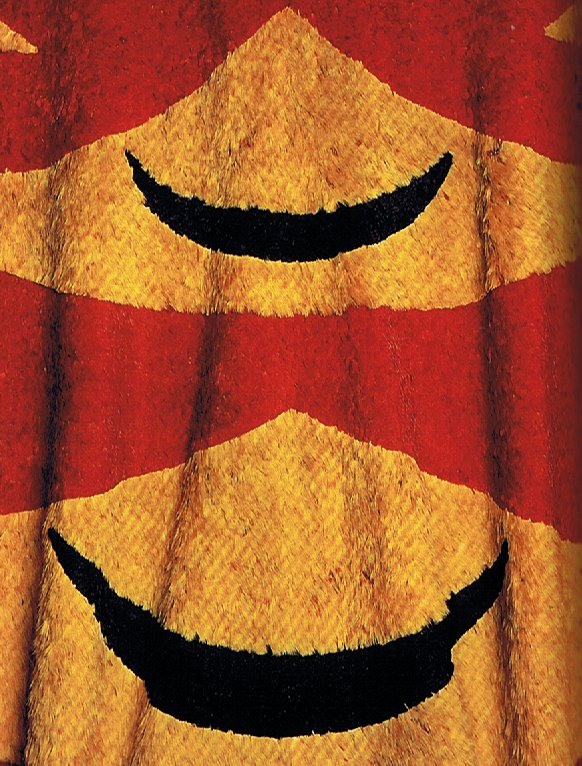Once again. There were 39 kinds of water yam roots, inclunding that at Bharani. But there was no such variant of uhi at Adhil nor at Mira:
We could imagine Sirrah (The Navel of the Horse) was thought of as present at the beginning of the border line notches on the prehistoric ivory plate, because 6 + 13 = 19 (Adhil, The Garment's Train): ... The edges contain a total of 39 notches in groups of 6, 13, 7 and 13 ...
However, this would necessitate a time reversal for the 2nd pair of notches on the border of the ivory tablet from 7 and 13 to 13 and 7.
The sky garment (cfr Asko Parpola The Sky Garment) was evidently present also at Syrma (The Train of the Virgin's Robe) = ι Virginis (*215). And we can count *215 (Syrma) - *19 (Adhil) = *196 (= 4 * 49 = 28 weeks). ... Fish are actually unable to close their eyes, and the fact that 'when the fish sleeps it does not close its eyes' was noticed by ancient Indians. The dot-in-a-circle similar to that occuring among the trefoils of the Harappan 'priest-king´s' robe is identical with the eye of the many small hare- and fish-shaped amulets discovered on the lower levels of Harappa ...
Possibly we should therefore understand that the 49 notches on the back side of the ivory plate could each have represented not only a day (when counting 39 + 49 = 88) but also (alternatively) 4 days, corresponding to the right ascension distance from the train of one garment to that of the other, viz. from that of Andromeda to that of Virgo. 4 * 49 = 196 = half 392 (as in the number of glyphs on side a of the Mamari tablet). And then we maybe should count each notch on the border of the ivory plate as representing a full week, for 39 * 7 = 273 (as in the day number for the last day of September). I.e., 28 weeks (the back side of the plate) + the border line (39 weeks) = 67 weeks = 469 days = 273 + 196. By the way: 46 * 9 = 414 → 14 * 29½ + 1 → Bharani.
There seems to have been an association beetween the sweet water yam (uhi) and the woman's work with sewing: Yam (Dioscorea alata); a large tuber, one of the main staple foods in ancient times, of which some 40 varieties were grown. Uhi-uhi, to sew (also: tía); ka-uhiuhi toou nua, sew yourself a cape. Vanaga.
... Wikipedia has no information regarding the origin of the Phoenician lamedh, but the Egyptian 'cloth' hieroglyph (menchet) is - I suggest - related to the 4 upside down sky pillars. I.e. the basic element of the 'covering' hieroglyph could have indicated darkness:
... The Fijian barkcloth that in the end captures the chief represents his capture of the land: upon installation, he is said to hold the 'barkcloth of the land' (masi ni vanua). The barkcloth thus has deeper significance. In general ritual usage, barkcloth serves as 'the path of the god'. Hanging from the rafters at the rear, sacred end of the ancient temple, it is the avenue by which the god descends to enter the priest ... There is still more to the barkcloth. The barkcloth which provides access for the god/chief and signifies his sovereignity is the preeminent feminine valuable (i yau) in Fiji. It is the highest product of woman's labor, and as such a principal good of ceremonial exchange (soolevu). The chief's accession is mediated by the object that saliently signifies women ... |
|||||||||||||||||||||||||||||||||||||||||||||||||||||||||||||||||||||||||||||||||||||||||||||||||||||||||||||||||||||||||||||






